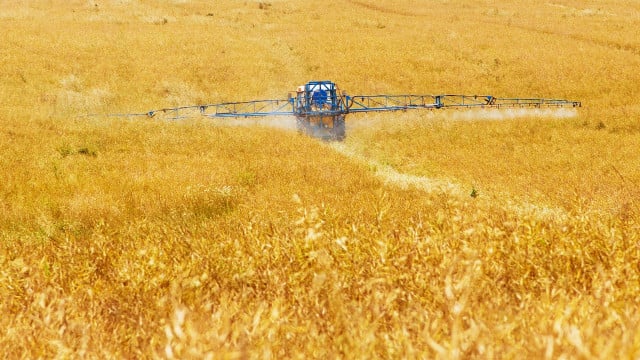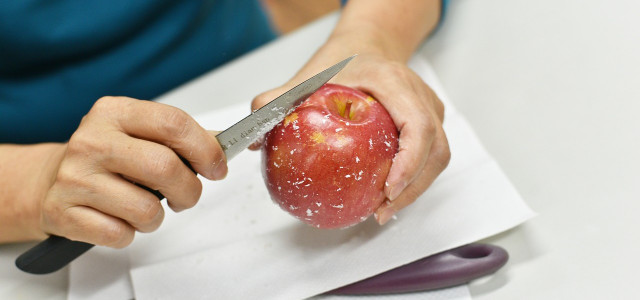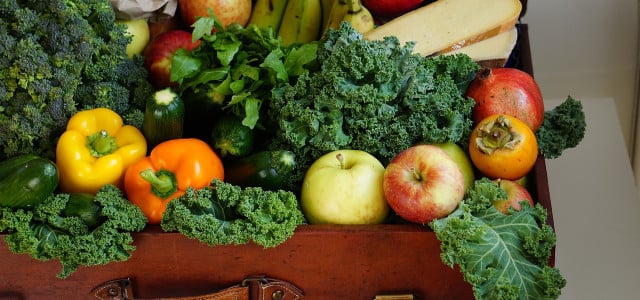Wax is applied to fruit and vegetables to keep them fresh. Here's everything you should know about fruit wax, pesticides and how to clean fruit correctly.
What does fruit wax have to do with knowing how to clean fruit? Well, fruit wax is a coating layer that improves fruit’s appearance, longevity and transit security. Fruit wax can be manufactured artificially with petroleum-based waxes or produced naturally with ingredients like beeswax, shellac and carnauba wax.
Fruit wax also prevents fruit from drying out, stops mold development and protects it from damage in transit. In addition, wax can make fruit more visually attractive by giving it a glossy, shiny finish. Waxing is frequently used on apples, oranges, lemons, pears and vegetables like eggplant and cucumber.
The FDA has approved certain types of wax for use on fruits and vegetables as safe for human consumption. Getting unwaxed fruit at farmer’s markets and grocery stores is easy if you prefer not to consume fruit treated with wax or learn how to clean fruit.
What Pesticides and Chemicals Are Used on Fruit?

(Foto: CC0 / Pixabay / PublicDomainPictures)
Fruits and vegetables frequently get chemical treatments like insecticides and fertilizers to keep them pest-free and increase their yields and aesthetic appeal.
The most commonly used chemical pesticides include:
1. Organophosphates: Poisonous to insects, organophosphates are a class of pesticides applied to crops lik apples, grapes and citrus. Consumed in excessive amounts, they can be harmful to human health.
2. Pyrethroids: Pyrethroids are a different class of insecticides most commonly applied to berries. They can lead to severe health issues if consumed in high quantities.
3. Neonicotinoids: These pesticides are employed on fruit and crops. They can harm the ecosystem and are poisonous to bees and other pollinators.
4. Glyphosate: This pesticide is frequently applied in orchards to control weeds. It is prohibited in several countries as it has been connected to health issues, including cancer.
5. Chlorpyrifos: Chlorpyrifos kills insects on fruit and vegetables. It is prohibited in multiple countries due to evidence linking it to adverse effects on children’s growth and development.
Utopia tip: Whether waxed or unwaxed, fruits and vegetables are considered safe to consume — provided you properly wash and prepare them. If you’re concerned about eating fruit treated with pesticides, look for organic food and unwaxed varieties.
How to Wash Fruit and Remove Wax



(Foto: CC0 / Pixabay / kaboompics)
There are a few reasons you might want to know how to clean fruit to get rid of wax and chemicals:
- If you eat a lot of fruit, you might want to think again about how much pesticides and other chemicals that growers use on their crops you’re putting into your body. Getting rid of potentially harmful compounds reduces people’s exposure to them.
- Some people are allergic or sensitive to the insecticides or waxes used on fruits. By removing the wax, serious reactions can be avoided.
- Pesticides and fruit wax may alter flavor and texture. Some people may prefer the fruit’s natural flavor once the wax and chemicals are removed.
Even if you plan to peel the fruit before eating it, you should still wash it. This little measure will lessen your contact with pesticide residue and help you get the most out of your produce.
With all of this in mind, the question of how to clean fruit remains.
How to Clean Fruit Correctly: A Step-By-Step Guide



(Foto: CC0 / Pixabay / stux)
Fruit must be thoroughly cleaned to remove any dirt, pesticides or other contaminants before it can be consumed safely. Here’s what to do:
- Begin by thoroughly washing your hands with warm, soapy water for at least 20 seconds. Hygiene is the top priority.
- Wash any fruit you have under running water to remove dust or debris. Some varieties of fruit, such as apples or cucumbers, might require a more delicate brush, as they have thicker skins.
- Porous fruits, like berries, don’t need to be soaked completely; instead, give them a short rinse under running water.
- Use a moist cloth or sustainable paper towel alternative to remove stubborn residue and dirt.
- To prevent mold growth, dry the fruit well with a clean cloth or towel before eating or storing it.
Utopia Tip: A solution of water and vinegar effectively removes pesticide residue and other difficult-to-clean substances. Mix one part vinegar to three parts water, soak the fruit for a few minutes, and then thoroughly rinse it under running water.
Different wax removal methods may be required for different types of fruit. These include:
- Apples and pears: To keep them safe during storage and shipping, apples often have a layer of wax. Wash them under running water and scrub gently with a vegetable brush or clean sponge.
- Citrus fruits: To keep them fresh, citrus fruits like oranges or lemons are often waxed. Scrub them with a brush or sponge after soaking them in a solution of water and vinegar for about 15 minutes.
- Grapes: Grapes are treated with pesticides to keep them free of bugs. Leave grapes in a solution of water and baking soda for about 15 minutes to get rid of these contaminants, and wash them well afterward.
- Berries: To preserve their texture and flavor, berries like strawberries and raspberries can also have fruit wax. Rinse berries under running water to get rid of the wax, and dry them with a clean towel.
Read more:
- Washing Strawberries with Vinegar to Keep them Fresh Longer
- How to Keep Your Produce Fresher for Longer
- How to Quickly Get Rid of Fruit Flies with White Vinegar
Important Information regarding Health-related Topics.
** Links to retailers marked with ** or underlined orange are partially partner links: If you buy here, you actively support Utopia.org, because we will receive a small part of the sales proceeds. More info.Do you like this post?







